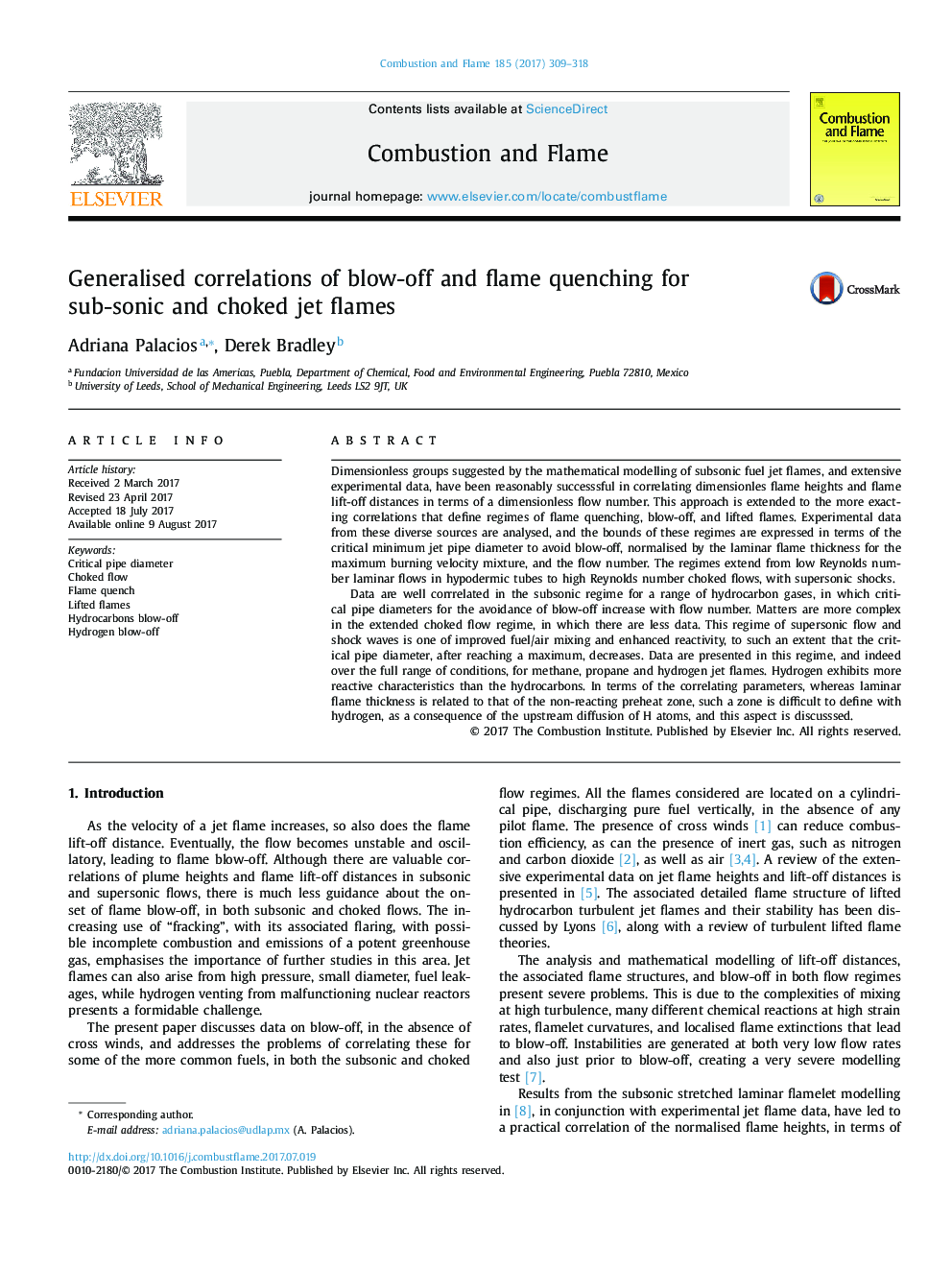| کد مقاله | کد نشریه | سال انتشار | مقاله انگلیسی | نسخه تمام متن |
|---|---|---|---|---|
| 6468087 | 1423552 | 2017 | 10 صفحه PDF | دانلود رایگان |
Dimensionless groups suggested by the mathematical modelling of subsonic fuel jet flames, and extensive experimental data, have been reasonably successsful in correlating dimensionles flame heights and flame lift-off distances in terms of a dimensionless flow number. This approach is extended to the more exacting correlations that define regimes of flame quenching, blow-off, and lifted flames. Experimental data from these diverse sources are analysed, and the bounds of these regimes are expressed in terms of the critical minimum jet pipe diameter to avoid blow-off, normalised by the laminar flame thickness for the maximum burning velocity mixture, and the flow number. The regimes extend from low Reynolds number laminar flows in hypodermic tubes to high Reynolds number choked flows, with supersonic shocks.Data are well corrrelated in the subsonic regime for a range of hydrocarbon gases, in which critical pipe diameters for the avoidance of blow-off increase with flow number. Matters are more complex in the extended choked flow regime, in which there are less data. This regime of supersonic flow and shock waves is one of improved fuel/air mixing and enhanced reactivity, to such an extent that the critical pipe diameter, after reaching a maximum, decreases. Data are presented in this regime, and indeed over the full range of conditions, for methane, propane and hydrogen jet flames. Hydrogen exhibits more reactive characteristics than the hydrocarbons. In terms of the correlating parameters, whereas laminar flame thickness is related to that of the non-reacting preheat zone, such a zone is difficult to define with hydrogen, as a consequence of the upstream diffusion of H atoms, and this aspect is discusssed.
Journal: Combustion and Flame - Volume 185, November 2017, Pages 309-318
